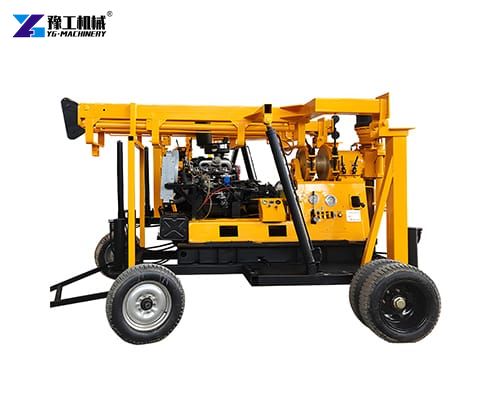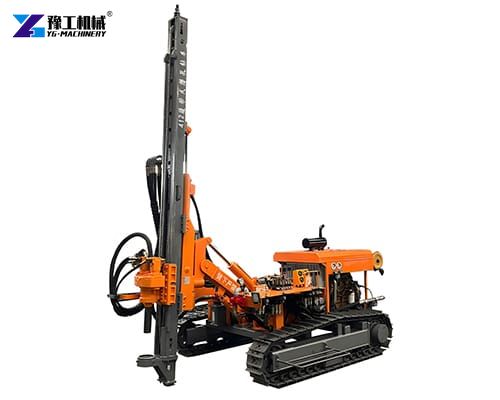RC drilling machine, reverse circulation drilling rig, is a highly effective drilling method widely used in mining, geology, and exploration industries. The reverse circulation, central to this method, offers a faster and cleaner solution compared to conventional drilling systems. Its ability to deliver high-quality samples while minimizing environmental impact makes it the preferred equipment for modern borehole and mineral exploration projects. In an RC system, the drill bit, typically a hammer or a face-sampling bit, is attached to a dual-wall drill pipe. Compressed air is pumped down the outer annulus of this pipe. This high-pressure air drives the hammer, which then pulverizes the rock at the drill face. The rock chips, or cuttings, are then carried by the air pressure up the inner tube of the drill pipe. This continuous upward flow of cuttings, against the direction of the air being pumped down, is what gives the method its “reverse circulation” name.
Advantages of Using an RC Drilling Machine
- Speed and Efficiency: RC drilling is significantly faster than core drilling, particularly in competent rock formations. The continuous sample return and rapid penetration rates translate to quicker project completion times and reduced operational costs.
- Cost-Effectiveness: Due to its speed and efficiency, RC drilling is generally more economical per meter drilled compared to core drilling, especially for exploration programs requiring extensive drilling. Less time on site and fewer consumables contribute to lower overall expenses.
- High-Quality Samples: The reverse circulation mechanism ensures that cuttings are brought to the surface quickly and without significant contamination from the borehole walls. This results in fresh, representative samples that are crucial for accurate geological and analytical interpretation.
Applications of Reverse Circulation Drilling Machine
In mineral exploration, RC drilling is a cornerstone. It provides rapid and cost-effective geological information, helping geologists define ore bodies, determine mineral grades, and plan future mining operations. Its ability to produce continuous, uncontaminated samples makes it ideal for resource estimation.
Mining operations also leverage RC drilling for grade control, blast hole drilling, and geotechnical investigations within existing mine sites. The speed of RC rigs allows for quick turnaround times, crucial for optimizing mining productivity.
In environmental drilling, RC machines are used for soil and groundwater sampling, often to assess contamination levels or monitor remediation efforts. The method’s ability to minimize cross-contamination between geological layers is a significant advantage in these sensitive applications.
Water well drilling is another common use. RC rigs can efficiently drill boreholes for domestic, agricultural, or industrial water supply, especially in areas with consolidated rock formations.
Geotechnical investigations for construction projects, such as dams, bridges, and large buildings, also benefit from. RC drilling. It helps engineers understand subsurface conditions, determine bearing capacities, and identify potential geological hazards.



